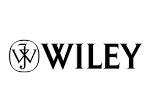Resource information
Restoring biological soil crusts (biocrusts) in degraded drylands can contribute to recovery of ecosystem functions that have global implications, including erosion resistance and nutrient cycling. To examine techniques for restoring biocrusts, we conducted a replicated, factorial experiment on recently abandoned road surfaces by applying biocrust inoculation (salvaged and stored dry for two years), salvaged topsoil, an abiotic soil amendment (wood shavings), and planting of a dominant perennial shrub (Ambrosia dumosa). Eighteen months after treatments, we measured biocrust abundance and species composition, soil chlorophyll a content and fertility, and soil resistance to erosion. Biocrust addition significantly accelerated biocrust recovery on disturbed soils, including increasing lichen and moss cover and cyanobacteria colonization. Compared to undisturbed controls, inoculated plots had similar lichen and moss composition, recovered 43% of total cyanobacteria density, had similar soil chlorophyll content, and exhibited recovery of soil fertility and soil stability. Inoculation was the only treatment that generated lichen and moss cover. Topsoil application resulted in partial recovery of the cyanobacteria community and soil properties. Compared to untreated disturbed plots, topsoil application without inoculum increased cyanobacteria density by 186% and moderately improved soil chlorophyll and ammonium content and soil stability. Topsoil application produced 22% and 51% of the cyanobacteria density gâ»Â¹ soil compared to undisturbed and inoculated plots, respectively. Plots not treated with either topsoil or inoculum had significantly lower cyanobacteria density, soil chlorophyll and ammonium concentrations, and significantly higher soil nitrate concentration. Wood shavings and Ambrosia had no influence on biocrust lichen and moss species recovery but did affect cyanobacteria composition and soil fertility. Inoculation of severely disturbed soil with native biocrusts rapidly restored biocrust communities and soil stability such that restored areas were similar to undisturbed desert within three years. Using salvaged biocrust as inoculum can be an effective tool in ecological restoration because of its efficacy and simple implementation. Although salvaging biocrust material can be technically difficult and potentially costly, utilizing opportunities to salvage material in planned future disturbance can provide additional land management tools.



